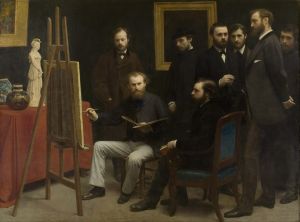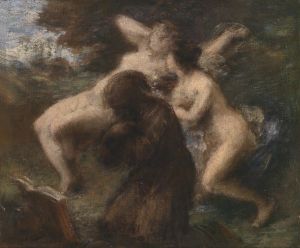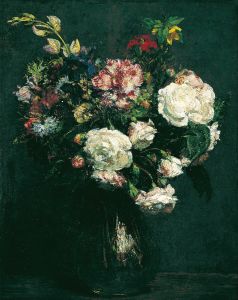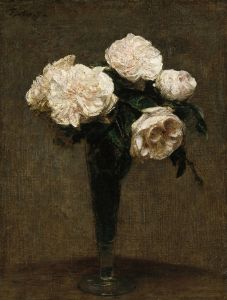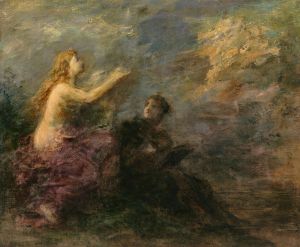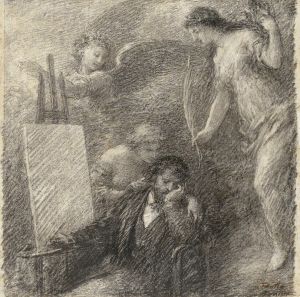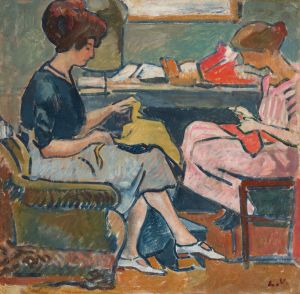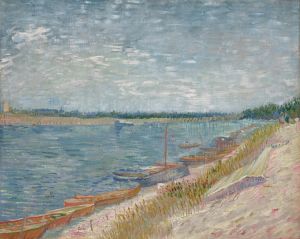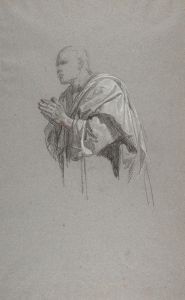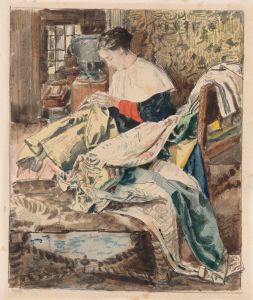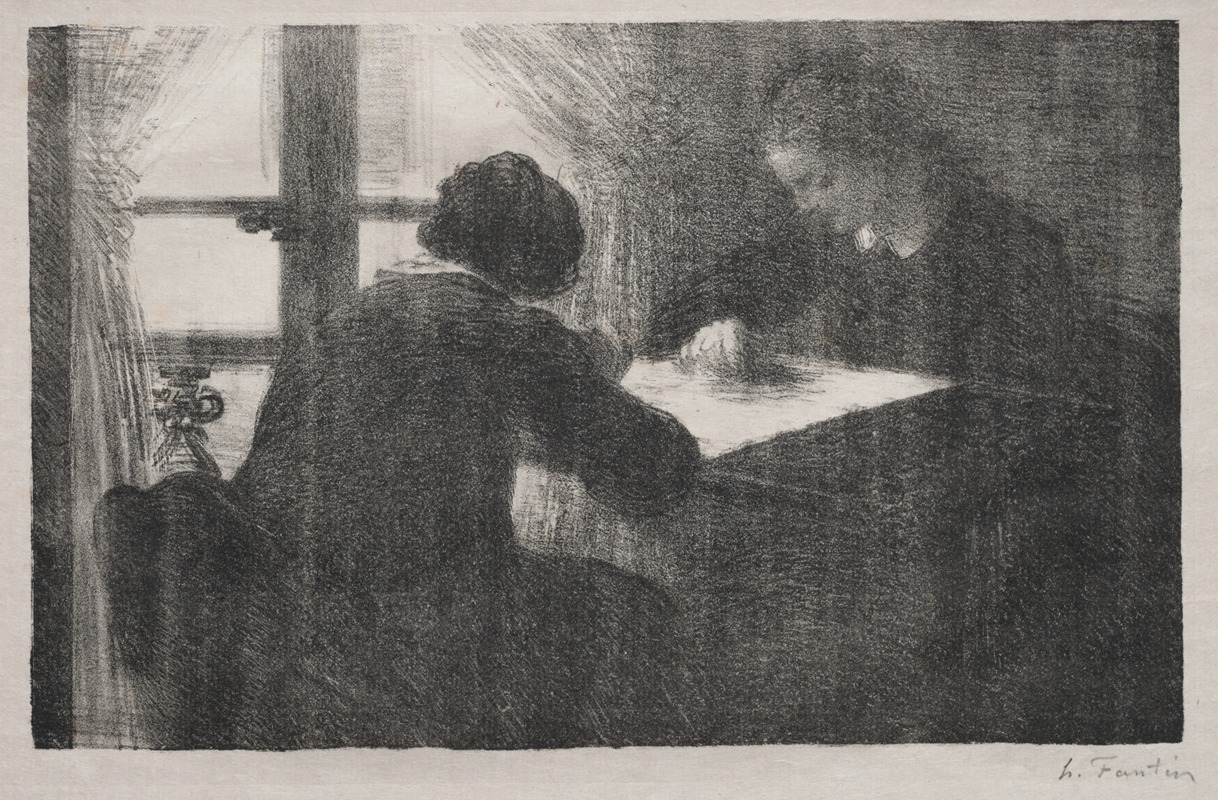
The Embroiderers
A hand-painted replica of Henri Fantin-Latour’s masterpiece The Embroiderers, meticulously crafted by professional artists to capture the true essence of the original. Each piece is created with museum-quality canvas and rare mineral pigments, carefully painted by experienced artists with delicate brushstrokes and rich, layered colors to perfectly recreate the texture of the original artwork. Unlike machine-printed reproductions, this hand-painted version brings the painting to life, infused with the artist’s emotions and skill in every stroke. Whether for personal collection or home decoration, it instantly elevates the artistic atmosphere of any space.
Henri Fantin-Latour was a French painter known for his still lifes and group portraits of Parisian artists and writers. One of his lesser-known works, "The Embroiderers," exemplifies his skill in capturing intimate, domestic scenes with a sense of realism and quietude. Painted in the 19th century, this artwork reflects Fantin-Latour's interest in depicting everyday life, particularly the roles and activities of women during this period.
"The Embroiderers" portrays a serene interior scene where women are engaged in the meticulous craft of embroidery. The painting is characterized by its attention to detail and the subtle interplay of light and shadow, which are hallmarks of Fantin-Latour's style. The composition is carefully arranged to draw the viewer's eye across the canvas, highlighting the concentration and skill of the embroiderers as they work. The choice of subject matter aligns with the 19th-century artistic trend of exploring domestic themes and the lives of women, which were often overlooked in the grand narratives of history painting.
Fantin-Latour's technique in "The Embroiderers" demonstrates his mastery of realism. He uses a muted color palette to create a harmonious and tranquil atmosphere, allowing the viewer to focus on the figures and their activity. The textures of the fabrics and the delicate threads are rendered with precision, showcasing the artist's keen observational skills. This attention to detail not only highlights the craftsmanship of the embroiderers but also elevates the act of embroidery itself to a subject worthy of artistic representation.
The painting also reflects the cultural and social context of the time. During the 19th century, embroidery was a common pastime for women, often associated with domesticity and femininity. By choosing to depict this activity, Fantin-Latour acknowledges the skill and artistry involved in what was traditionally considered a feminine pursuit. This choice can be seen as a subtle commentary on the value of women's work and creativity, which were often undervalued in a male-dominated society.
Fantin-Latour's work, including "The Embroiderers," was well-regarded by his contemporaries, and he was associated with the Realist movement, which sought to depict subjects truthfully without idealization. Although he is perhaps better known for his portraits of famous artists and writers, his domestic scenes offer a glimpse into the quieter, more personal aspects of 19th-century life. "The Embroiderers" is a testament to his ability to find beauty and significance in the everyday, capturing moments of concentration and tranquility that resonate with viewers even today.
In summary, "The Embroiderers" by Henri Fantin-Latour is a fine example of the artist's dedication to realism and his interest in the domestic sphere. Through his meticulous technique and thoughtful composition, Fantin-Latour elevates a simple scene of women at work into a poignant reflection on the artistry and value of everyday life.





